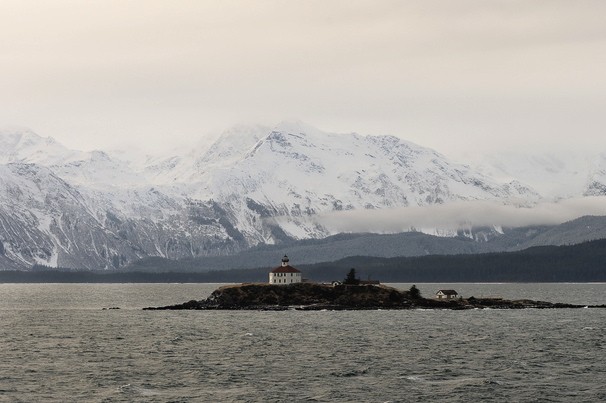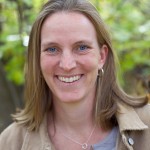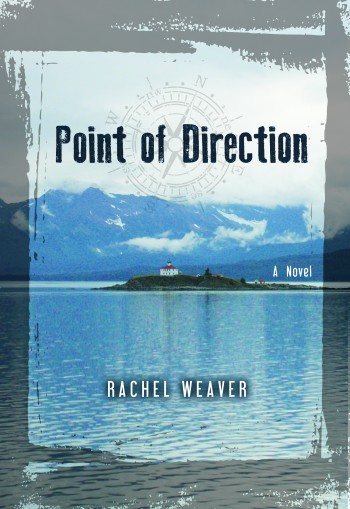Point of Direction Author Rachel Weaver

Rachel Weaver has sea kayaked through the remote reaches of southeast Alaska; tracked bears, songbirds, and raptors as a biologist; crewed boats in the Mediterranean; and cleared trails with chainsaws in New Hampshire.
Perhaps one of her most challenging endeavors, however, was something less spiked with adrenaline: finishing a novel, Point of Direction, which was released this month and hailed by the American Booksellers Association as one of the top ten debuts of the year.
Drawing on her wilderness experience, Weaver spins a vivid psychological thriller about a young, athletic couple who agree to take care of a lighthouse on a remote Alaskan island, where the last caretaker mysteriously disappeared some 20 years before. The protagonist, Anna, may be just as tough and capable as her partner, but they both hide secrets that could tear them apart in this cruel, gorgeous landscape.
We caught up with the Point of Direction author to talk about the power of the Alaskan landscape, the creative life, and how to draw inspiration and strength from the places we love most.

Author Rachel Weaver
You are an accomplished outdoors person as well as an author. What can you tell us about the dual life of a creative adventurer?
Doing biology work for the Forest Service in Alaska, I did a lot of things in the name of science. I flew around in a lot of inclement weather in very small planes. I hiked around bear country with a backpack full of bacon and molasses. I sat in tree stands over salmon streams to record the behavior of bears, who, it turns out, are very adept at climbing trees. Alaska is the type of place that demands adventure, whether you are ready for it or not.
One of my favorite things about writing fiction is pulling that sense of adventure and the stunning landscape that goes with it into the stories that I tell. I spent my single twenties and early thirties in Alaska and believe the sharp beauty of that landscape shaped not only my writing but me as a person. My daily life now is a bit more complex—twin three-year-olds, a couple jobs, a dishwasher that somehow always needs to be emptied—but I still get out into the natural world as much as possible because it fuels me in a way nothing else does.
The landscape of remote coastal Alaska comes alive in this book and at times has the strength of presence of a character itself. Can you tell us more about the way this landscape can inspire and inform a woman’s development as an outdoors person, a creative person, and a human being?
When I worked for the Forest Service, I was dropped off most days by helicopter or floatplane or boat on remote, uninhabited islands. I was struck by how powerful I felt in that landscape as well as how powerless. There is a line in the book in which the main character, Anna, is describing the coastline of Alaska when she first sees it after a long time gone: “It was beautiful in a way that demanded something. A landscape that could ask you at any time to measure all the hidden parts of yourself.” The natural world has a way of boiling you down to what is essential and important. I think women are particularly open to this and the growth it encourages, if you let it.
Can you offer some insight into your creative process?
After working three jobs through school to earn a degree in biology, I started taking poetry classes at night within months of graduating. I wrote poetry for five years, studying the hidden ways lyrical language can explode on the page. I always wanted to write a novel but was overwhelmed at the idea of such a big project. It was the third rainy, dark winter in Alaska that finally tipped the scales. I needed somewhere to escape to and I couldn’t afford a ticket to Hawaii, so I started writing fiction. The writing itself comes easy. Stumbling blocks tend to come when I am not writing every day. It’s just like running—I tend to get out of shape if too much time goes by. But it’s also like skiing in that after that initial run where you get the kinks worked out, it all comes back pretty quick.
Many of us share the sense of inspiration we get from the outdoors. Do you have any tips or words of wisdom for others who wish to channel that inspiration into creative endeavors, as you have?
I think the two go hand in hand. The more time I can spend outdoors and the more time I can carve out of my busy life for creative expression, the more grounded I feel as a human being. It’s hard, I think, especially as professionals and mothers, for us to demand some time for both these things. I certainly struggle with it myself, but I know that my whole family benefits when I am refreshed and happy and living my life as close to how I want to live it as I can.

Kamagra oral jelly Online something to buy the most convenient way. He doesn’t demand from you any actions except how to visit the website. And in separate with goods necessary to you to put the end. To specify your address and to wait for the supplier to whom you will give money.


LET'S GET SOCIAL